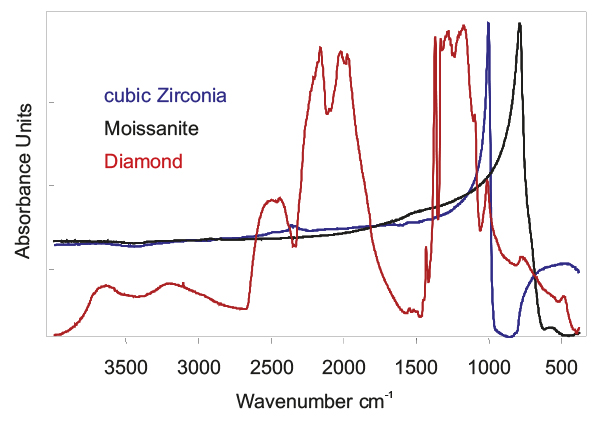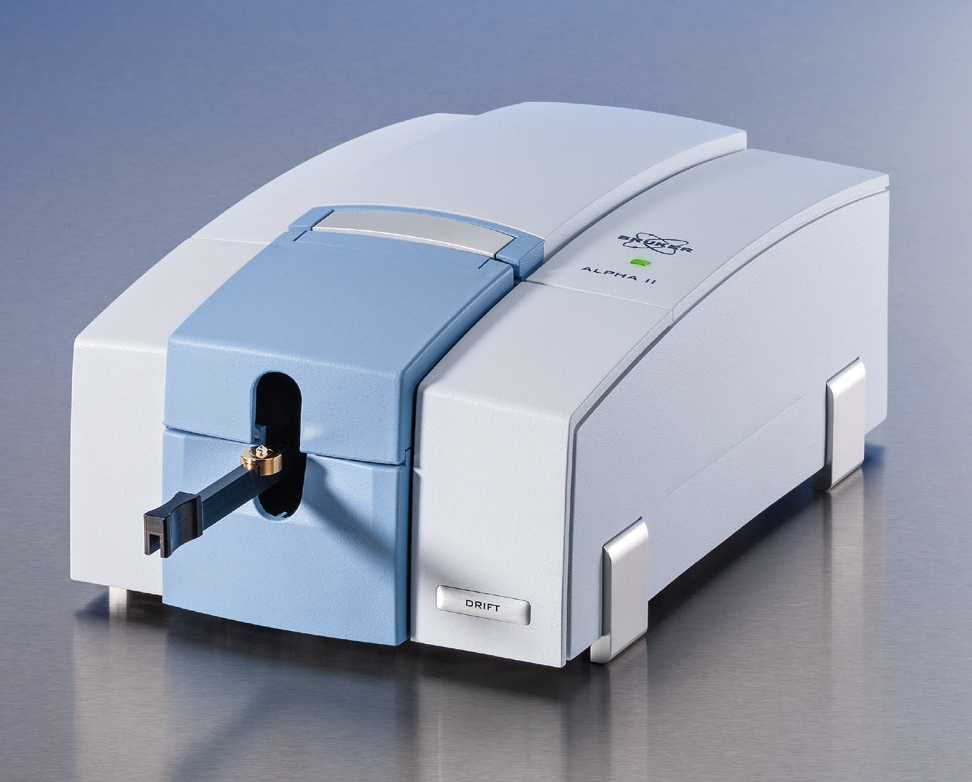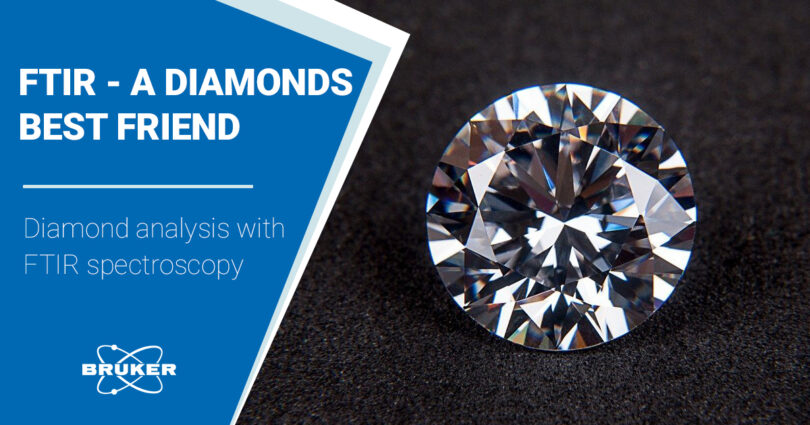FTIR spectroscopy is one of the most important analytical methods in mineralogy. Coincidentally, it is also the method of choice for diamond analysis e.g. identifying and categorizing diamonds. Diamond is not only the hardest gem on our planet, it is certainly also the most expensive one. Unfortunately, it is precisely this value that makes them vulnerable to counterfeiting.

Imitation or Synthetic?
When it comes to „fake“ diamonds, one must distinguish between synthetic diamonds, which are industrially produced from carbon, and imitations made out of non-carbon materials. While this article deals with the latter, here you can find more about the analysis of synthetic diamonds.
Perhaps the best known imitations are the cubic zircon and the moissanite. Although both are very similar to a diamond at first glance, the expert can quickly recognize these imitations by their brilliance or coloration.
However, if one wants to be absolutely sure, differentiation by FTIR spectroscopy is a good choice, since the chemistry of the imitations is fundamentally different from that of a real diamond.
FTIR spectroscopy for Diamond analysis
While Zirconia (ZrO2) can be identified quite simply by testing it with the so called “thermal pen test”, the case is different with Moissanite (SiC). Its thermal characteristics are very similar to that of diamond and ironically, real diamonds sometimes give false positives, since they are natural products with a range of thermal and electrical conductivity.
Thus, the pen test is not always the best choice. Other methods to unmask imitations are complex and can often only be performed by experienced gemologists.
But as usual, FTIR comes to the rescue. Since the chemical composition of the imitations is different from that of diamonds, it is easy to distinguish them by FTIR. On top of that, you do not have to be an expert to do it! The different spectra of imitates and the real deal are shown in Figure 2. The differences are crystal clear …

Conclusion
The result is obvious. Even a layman can distinguish the FTIR spectra of diamonds and imitates easily. But what about synthetic diamonds? Or melée diamonds embedded in jewellery?
Even here, FTIR can help providing insights into a diamonds chemistry. If you want to know more, read part II of our article: FTIR microscopy and diamond analysis.
The ALPHA II Diamond Analyzer
Bruker in collaboration with HRD Antwerp is offering the ALPHA II Diamond Analyzer (Figure 3). It allows even spectroscopically untrained users to measure and differentiate a diamond from an imitate in less than a minute.
For very large sample batches , the high throughput screening accessory (HTS-XT) is the tool of choice in diamond analysis. It allows automatically measuring and classifying a large number of samples in a very short time.

ALPHA II Diamond Analyzer.








